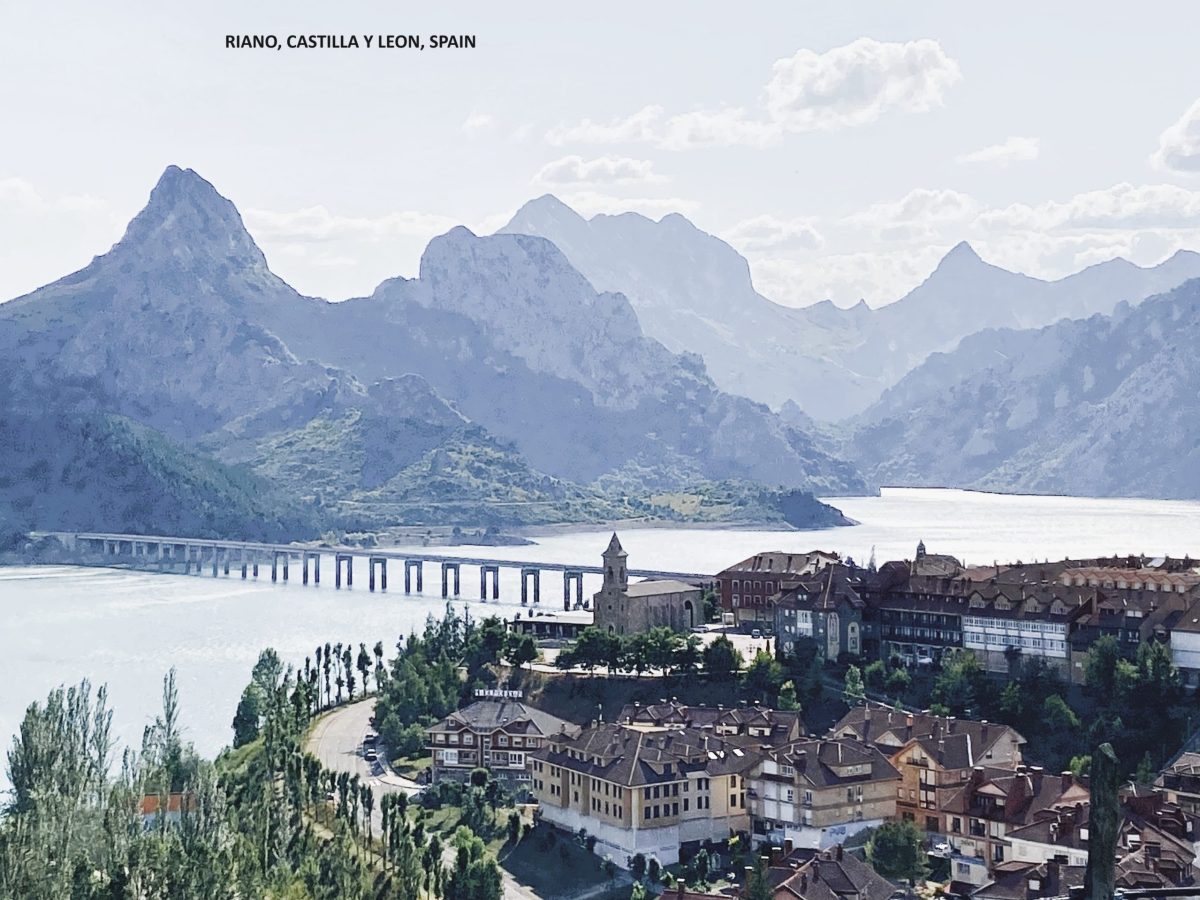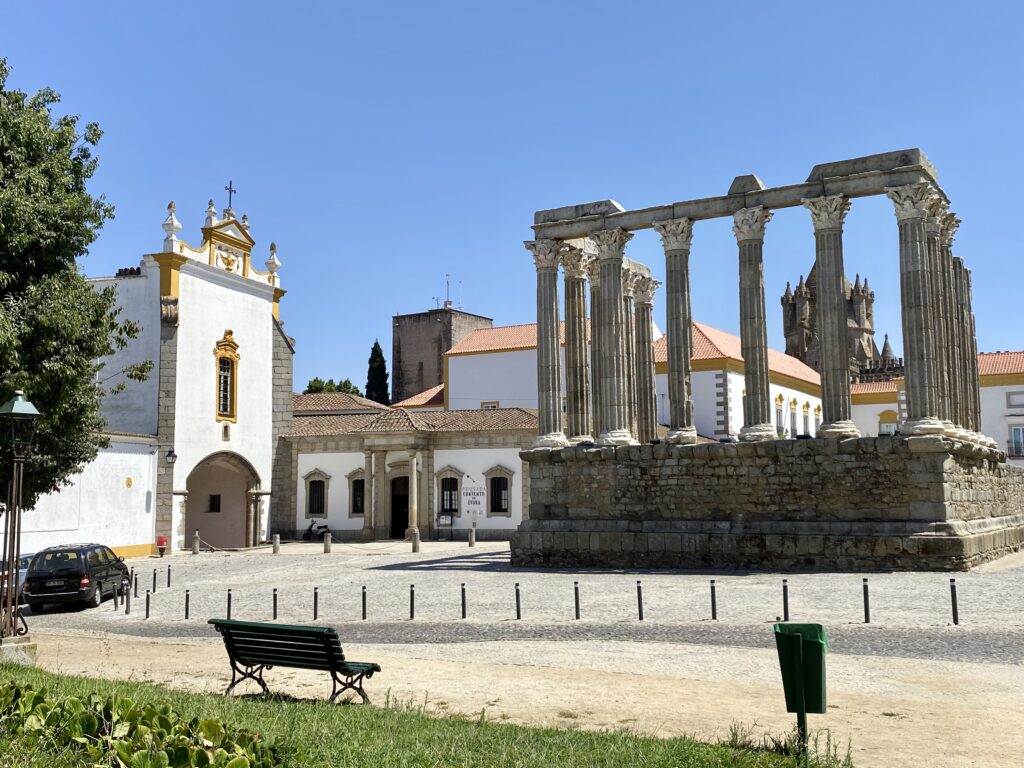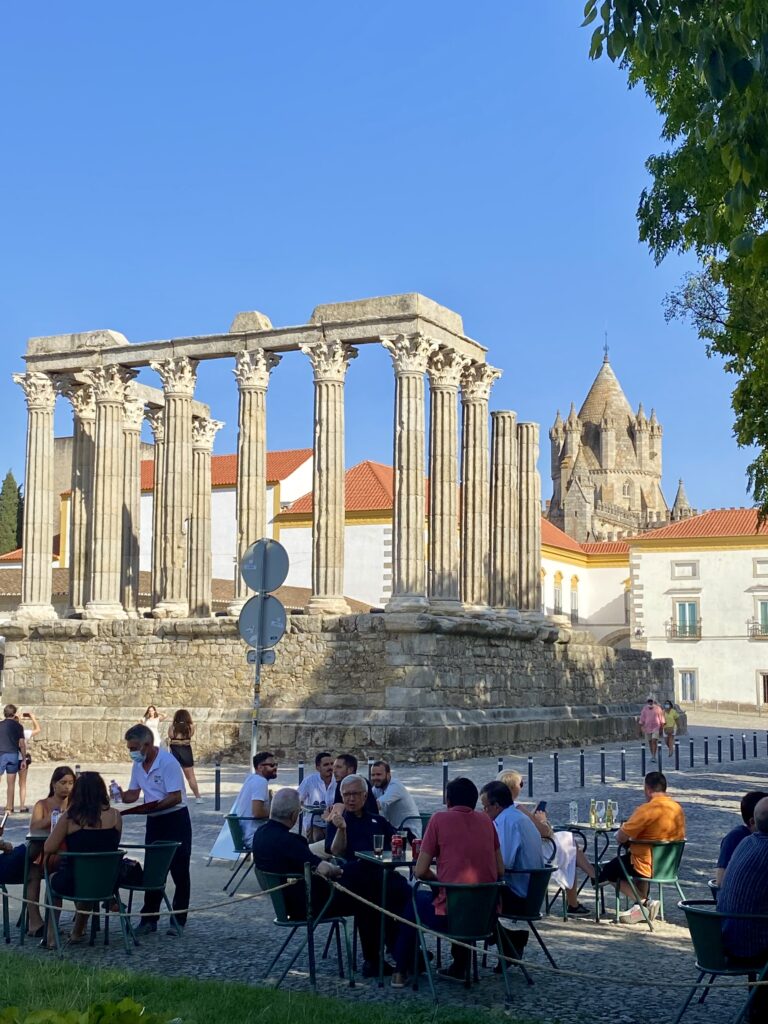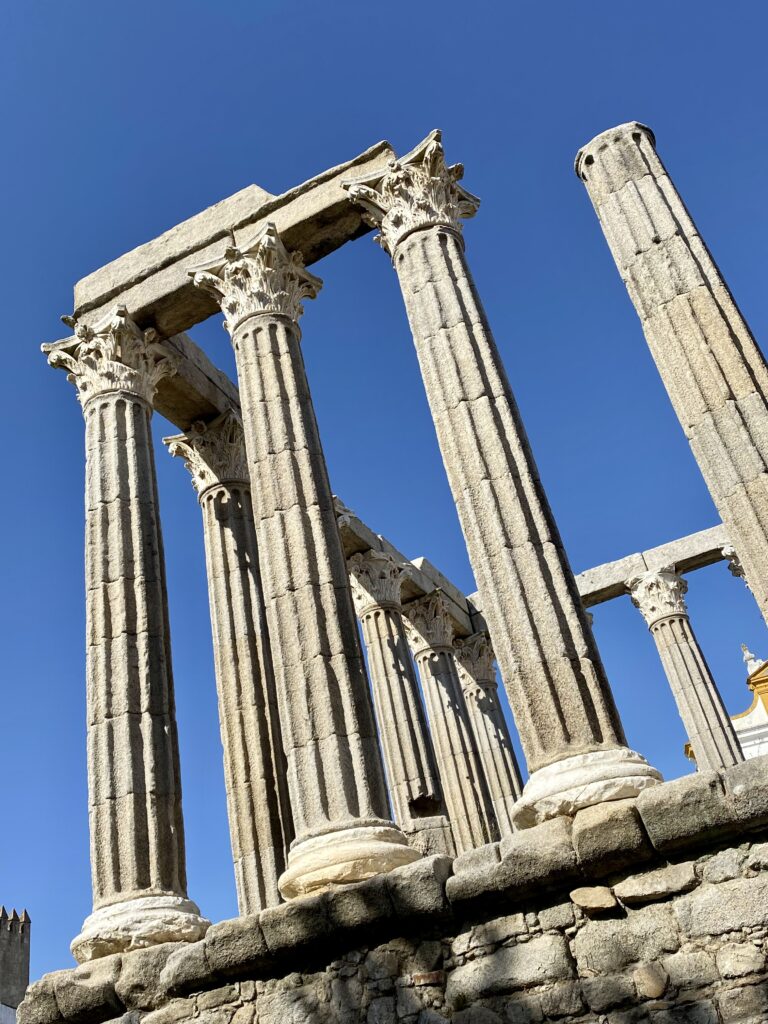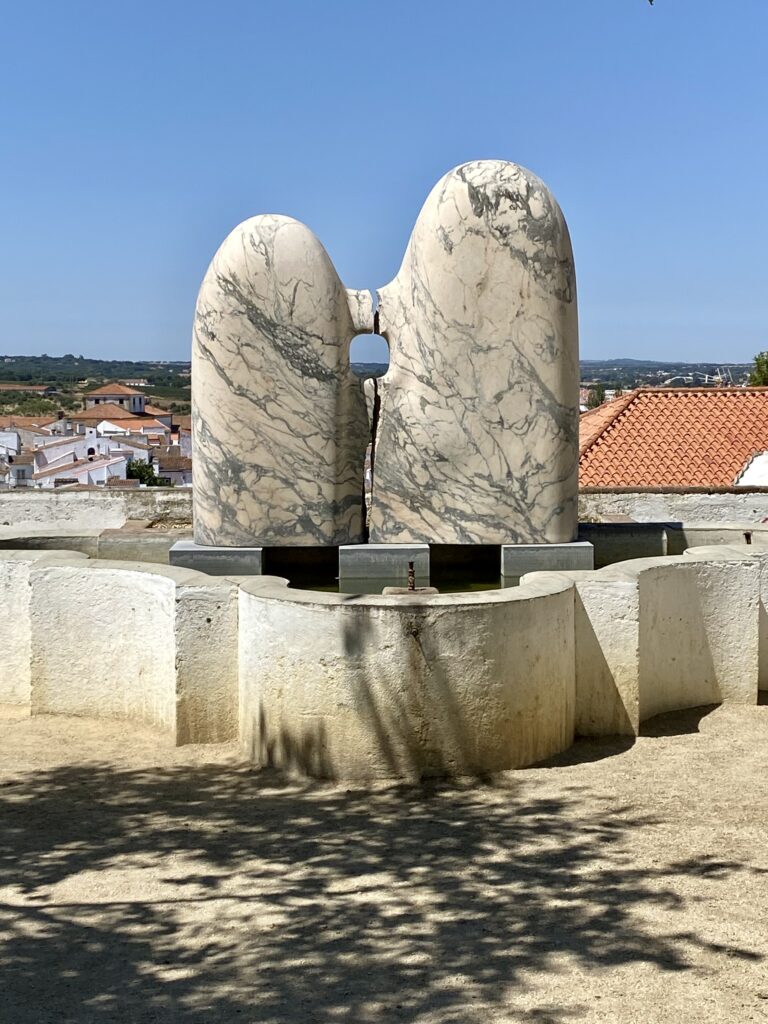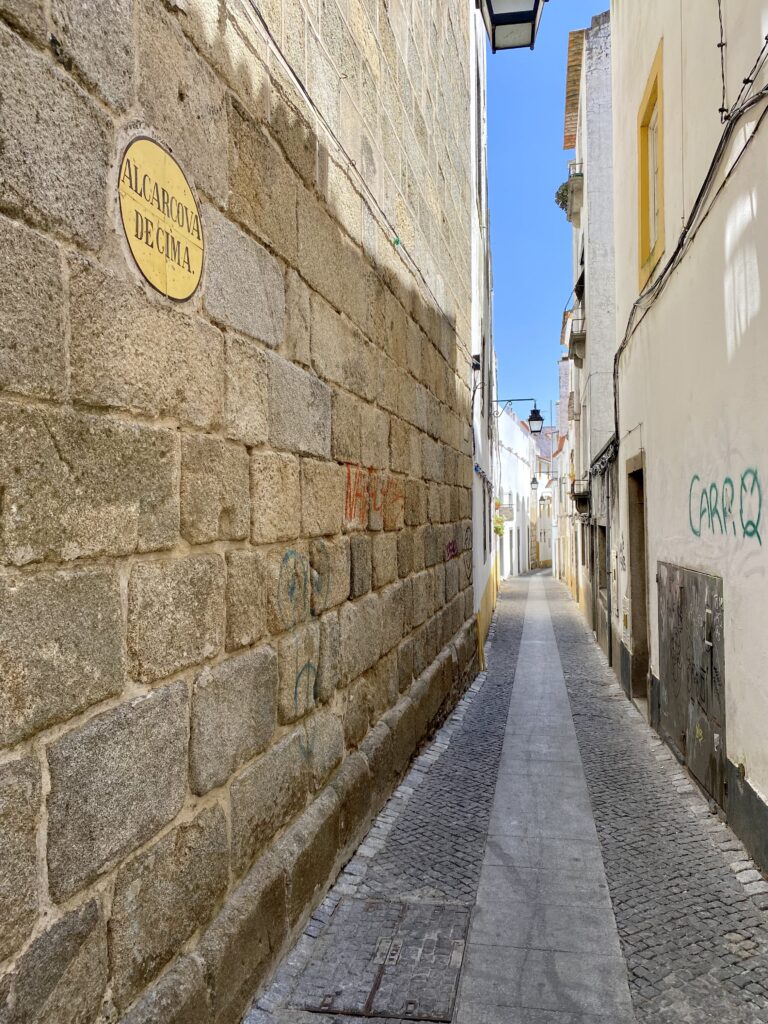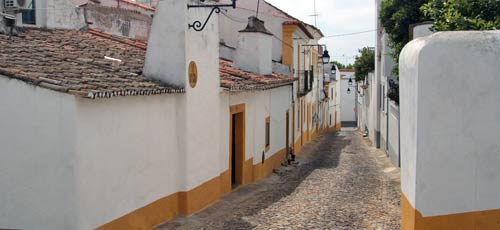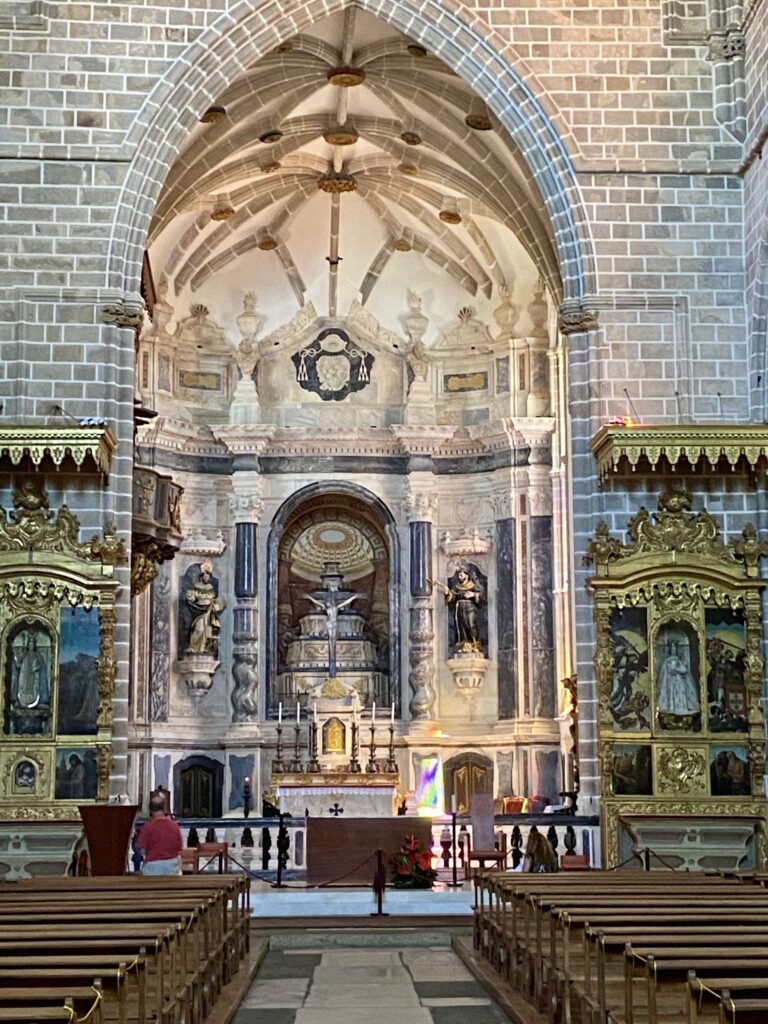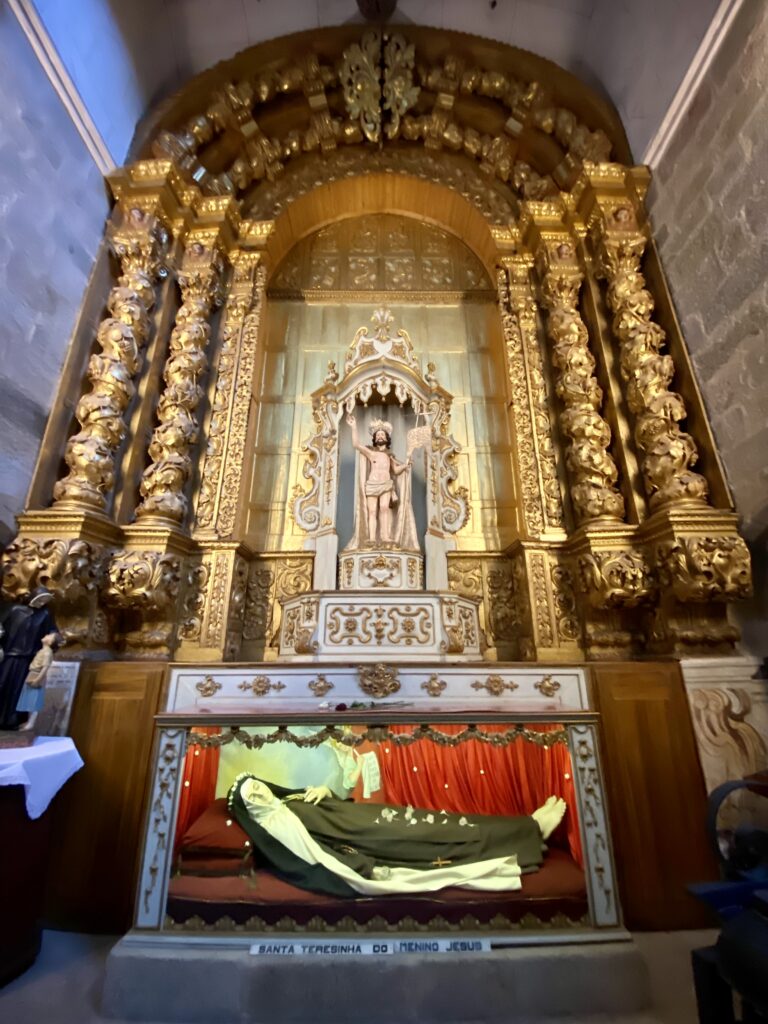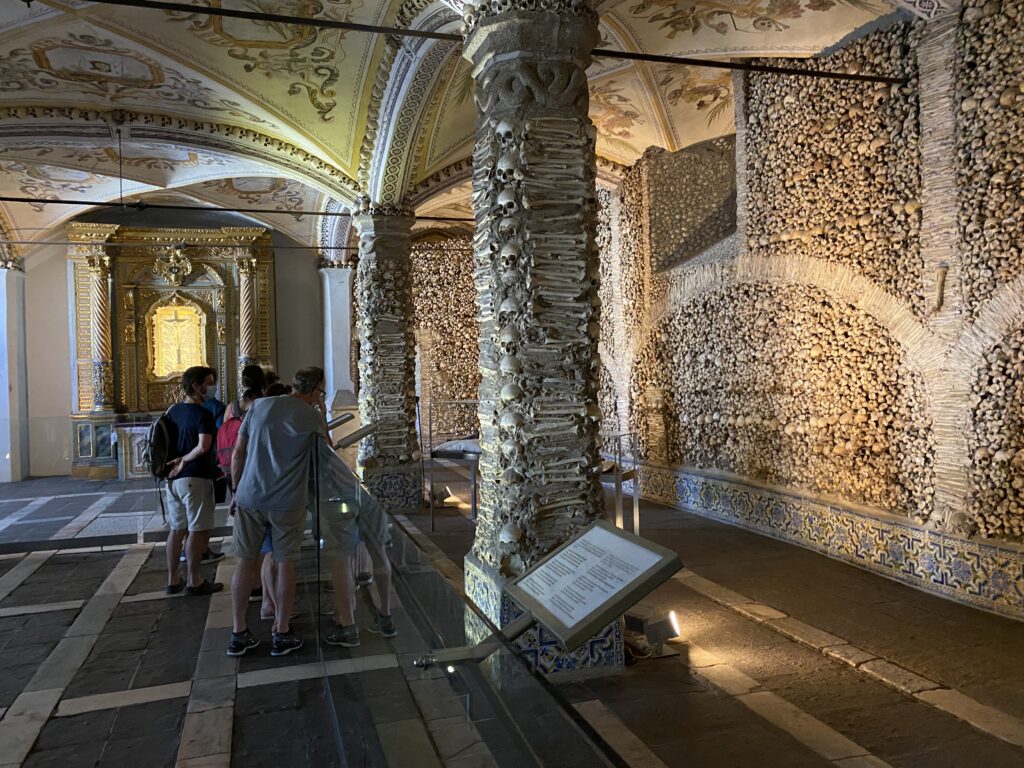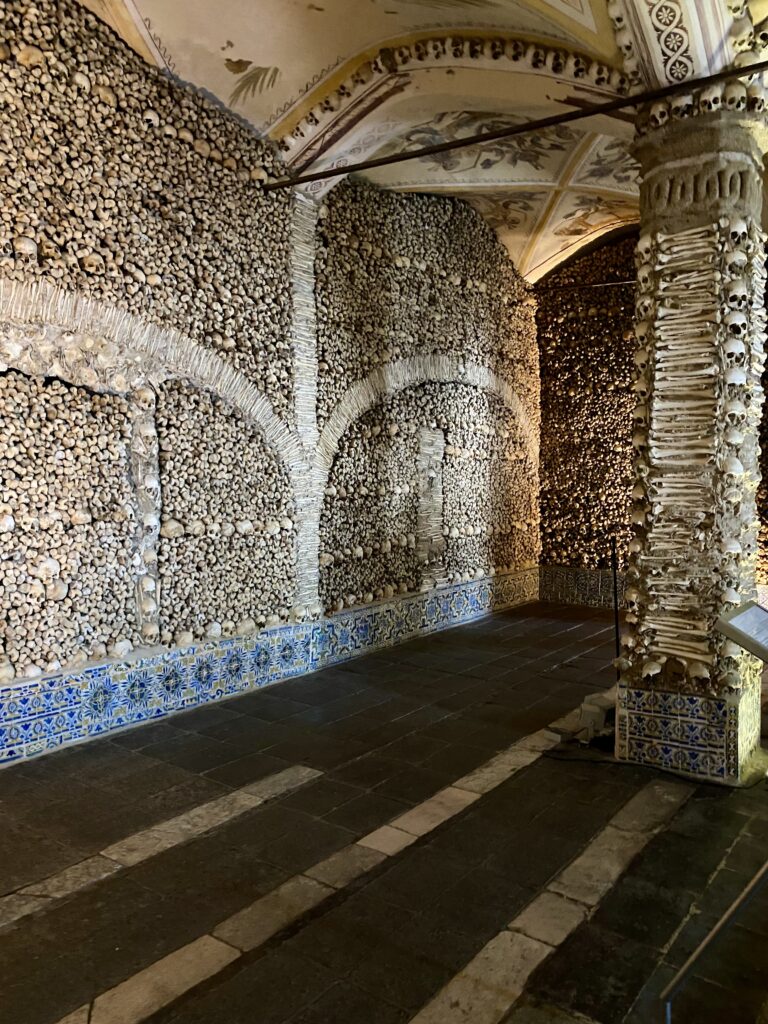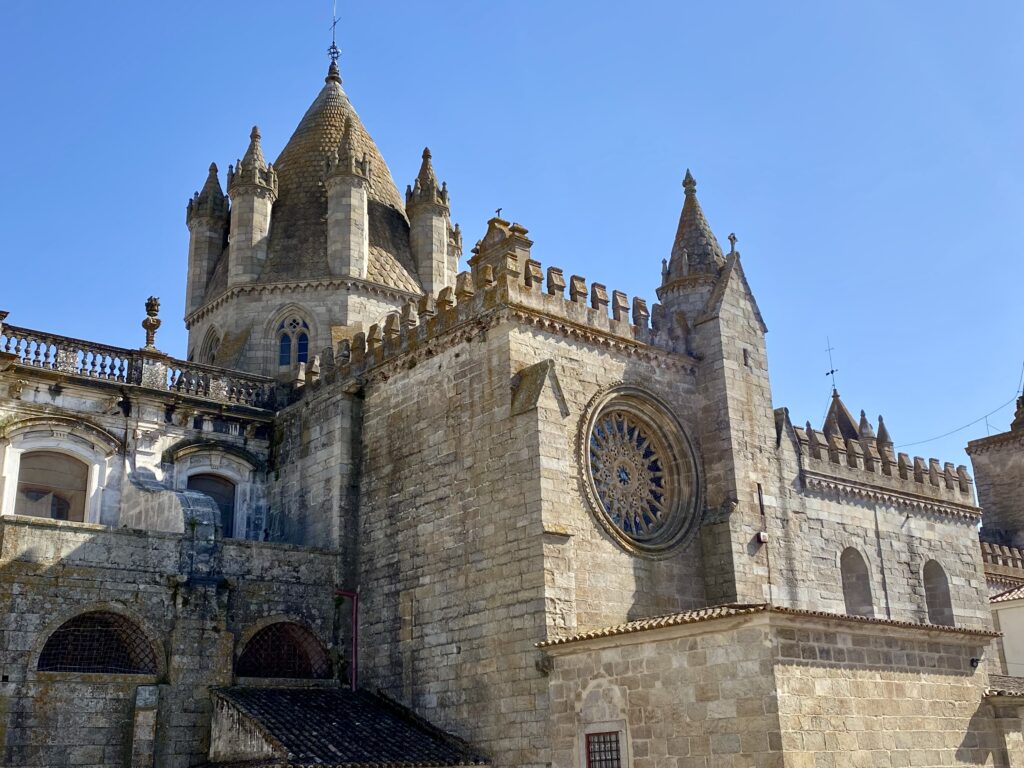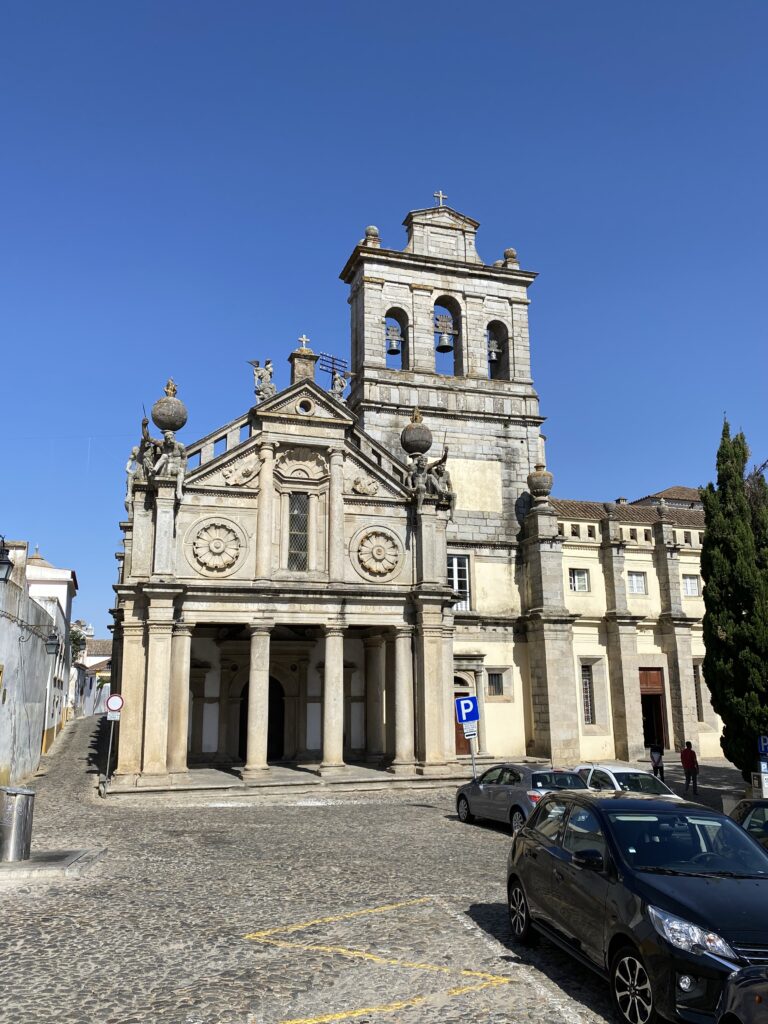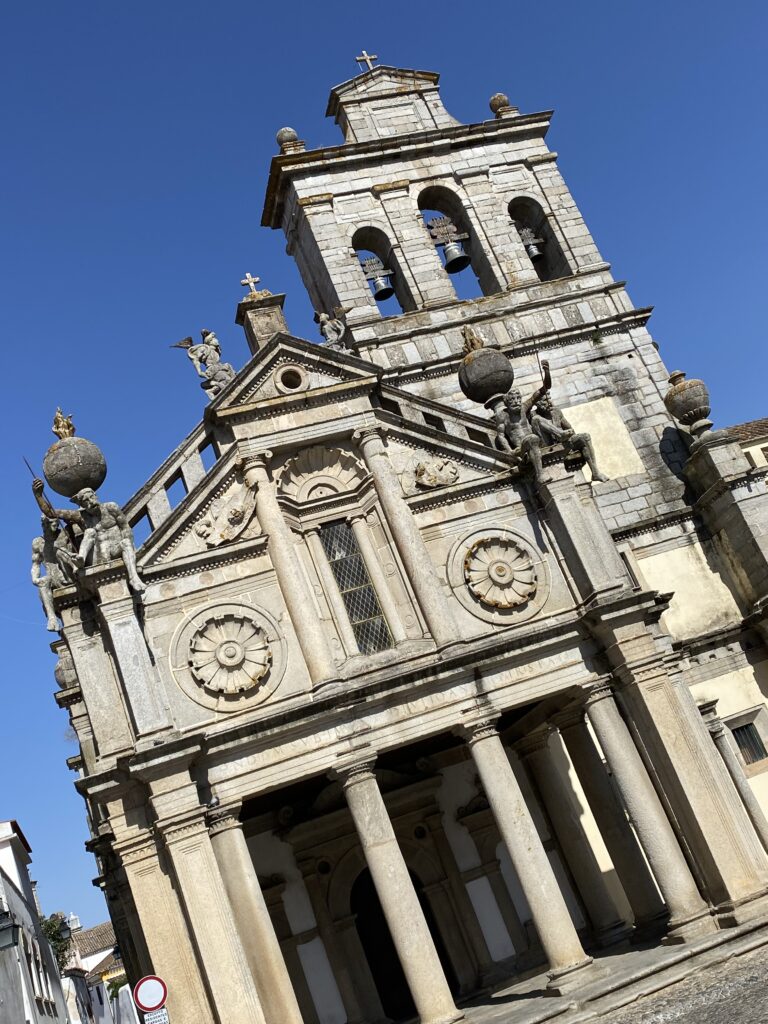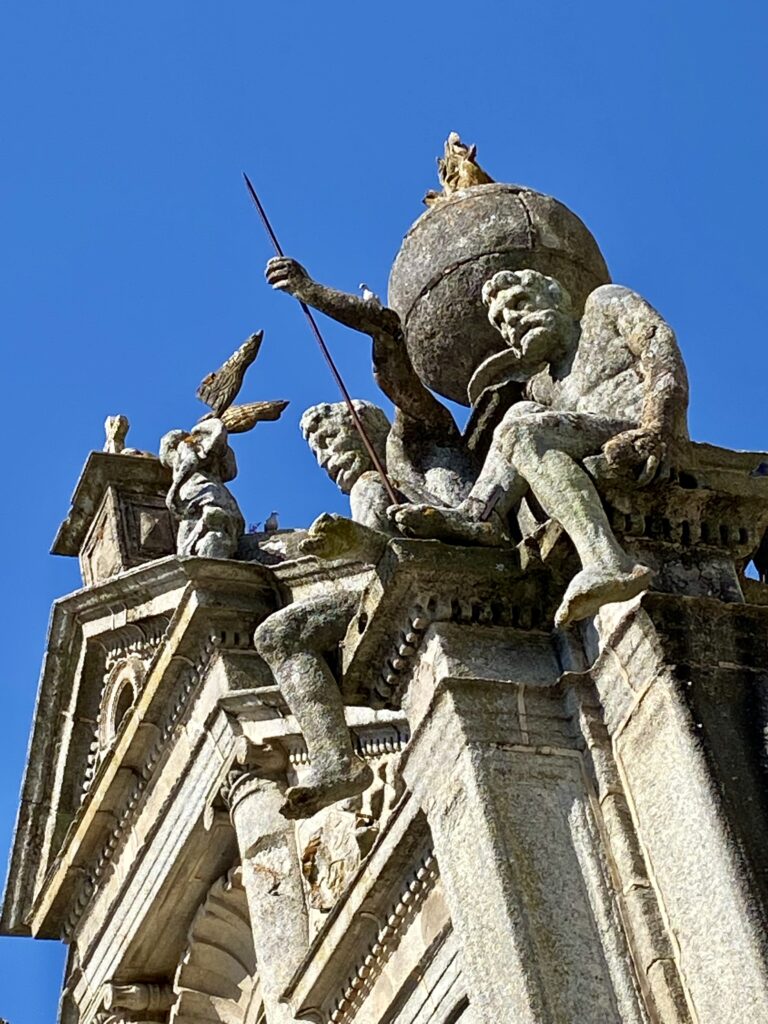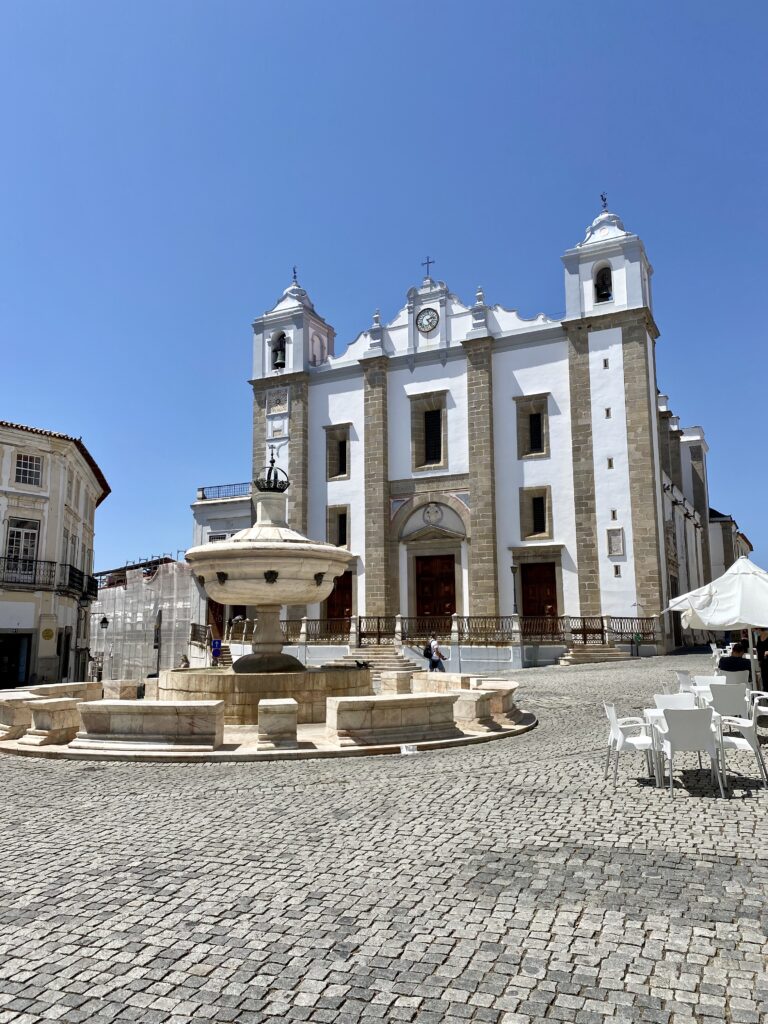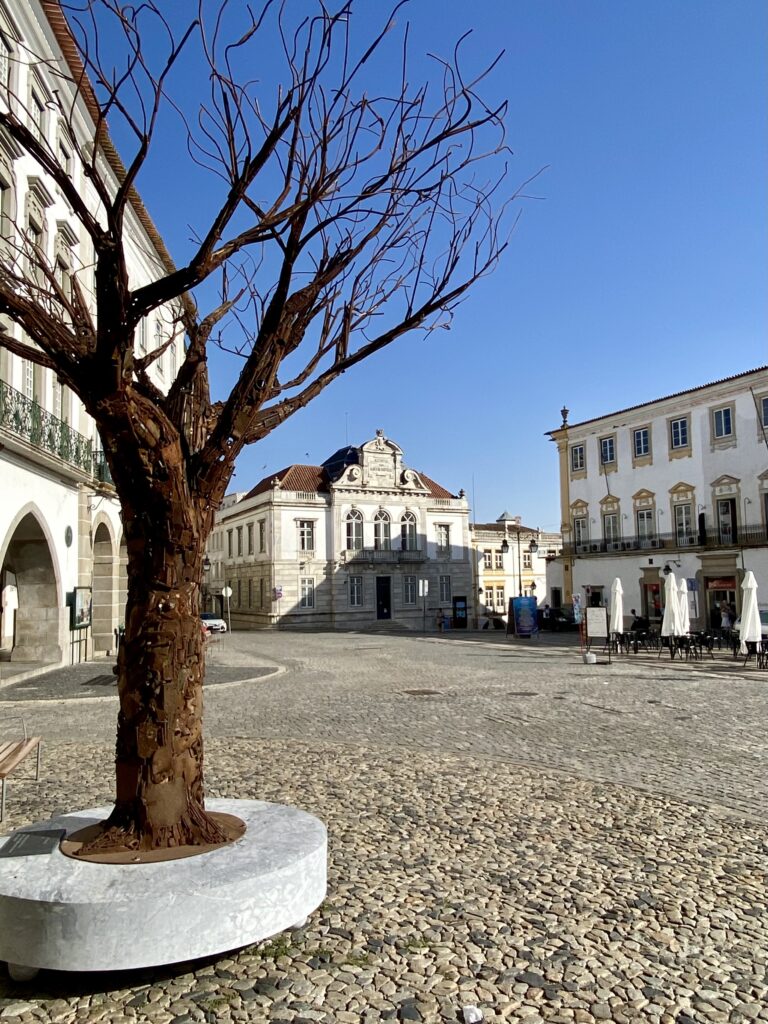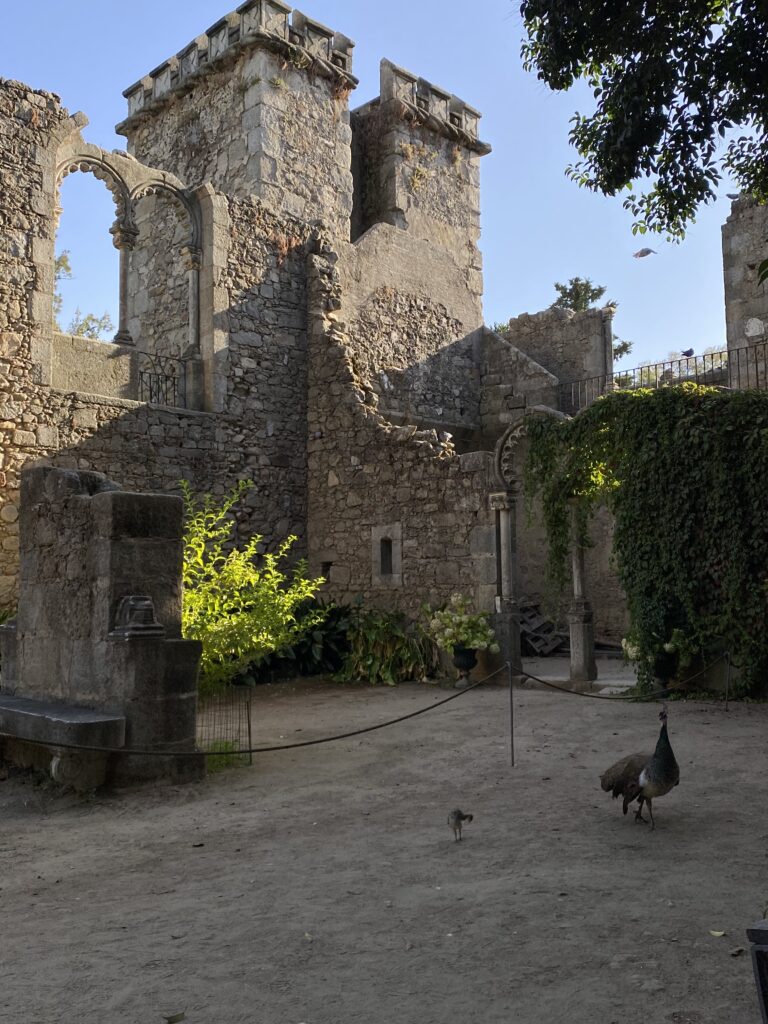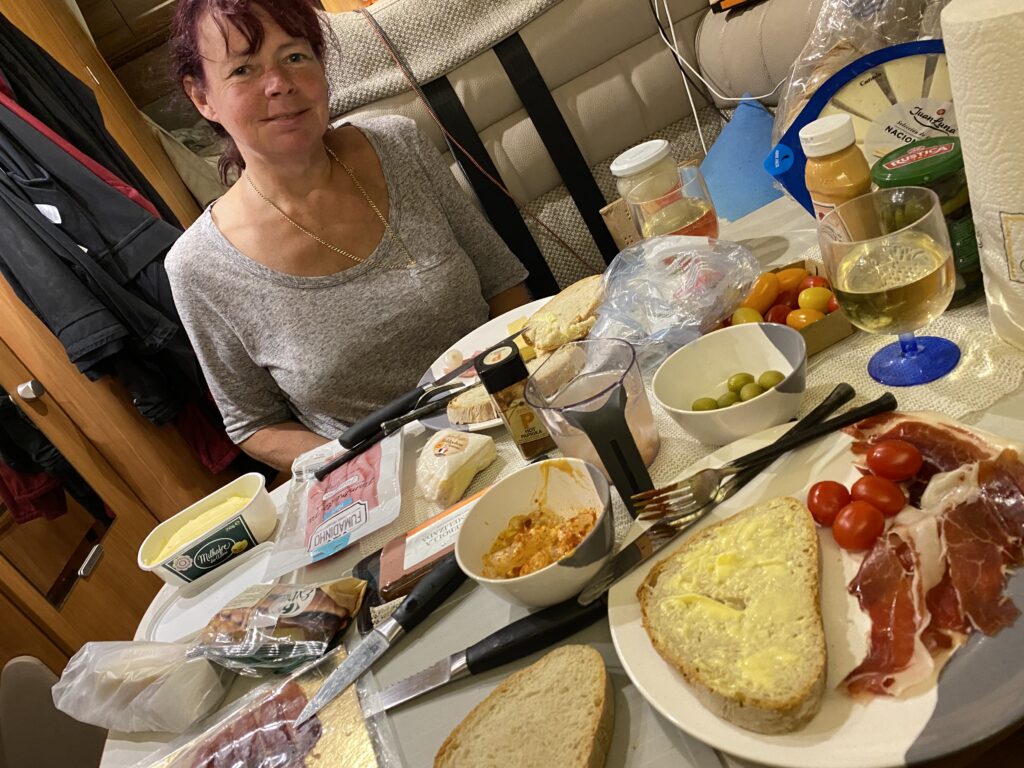Evora is an enchanting world heritage site rich in history, architecture and a great deal besides. It is a compact city almost entirely enclosed within the 14th century castle walls built by King Alfonso IV (although some of the walls are older having been erected by the Moors in 715) but, the day and a half which we allowed ourselves to explore the place was still insufficient. There is so much to see.
On arrival in Evora we saw what looked like a market filling half of the Praca do Rossio. We found a parking spot alongside the market but it was just finishing for the day so instead; we set off into the town for a beer and a quick look at the sights. We passed a couple of beautiful churches, the Igreja de Sao Francisco (Church of Saint Francis) and the Cathedral of Evora on our way to one of the highest points of the city, the Jardim Diana (the Garden of Diana), where we paused to get our bearings and that beer. The Garden of Diana is something of a disappointment being both small and very overgrown but it does sit high up in the centre of the old town, close to both the remains of a Roman Temple and the Cathedral of Evora and it provides great views over the city to the north.
After a short sto on the Jardim Diana, I drove Vanya and the dogs to a campsite on the outskirts of Evora and then walked the 3 kilometres or so back into the old town for a proper look. I don’t know how many miles I eventually covered that day walking to, from and around the town, but I enjoyed every yard of it.
First rising to prominence in Roman times, the city grew further during 500 years of Moorish occupation but, really began to flourish in the 15th century when Portugal’s kings moved there. The old town mostly dates from this latter period and it is a typical medieval maze of cobbled streets and traditional whitewashed houses (almost all of them with yellow edging).
I saw far too many interesting places and took far too many photos to include them all in this particular entry (not least because I am about two weeks behind with the blog now) but, the Igreja de Sao Francisco (the Church of Saint Francis) which was built in the early 1500’s and was the preferred church of resident royalty is perhaps my favourite.
Almost alongside the main entrance to the church and part of the same complex is the sinister Capela dos Ossos (the Chapel of Bones). This chapel was added to the church during the first half of 17th century with Franciscan friars digging up some 5,000 skeletons from 42 local monastic cemeteries and integrating them into the new chapel’s walls, arches and supporting pillars. It’s aim was to both create more space in the burgeoning city and provoke visitors into reflecting on the transitory nature of our lives. At the entrance to the chapel, as if to reinforce this, are the words:- “We the bones that are here for yours we are waiting”
At almost the highest point of the town is the pink granite Cathedral of Evora. Although construction of the cathedral commenced in 1204, it’s development continued over many hundreds of year and the finished product is a jumble of gothic and baroque architecture but, it is still very impressive. Unfortunately I arrived back at the cathedral as it was closing for the day and was denied entry. That was a real shame because the internal cloisters are supposedly very impressive and there are excellent views of the city and surrounding area from the roof top. (which can be accessed for 3.5 euros).
Another impressive church in Evora is the Igreja da Nossa Senhora da Graca (the Church of our Lady of Grace), notable for it’s baroque facade. In certain articles on this church it has been written that the statues on the roof represent Atlas and others like him holding earth in place in heavens. How could this be when in both Roman and Medieval times Earth was presumed to be flat?
Another interesting place to visit and watch the world go by is the square, Praco do Giraldo. It is named after Gerald the Fearless who turfed the Moors out of Evora in 1167. At one end of the square is the renaissance Church of Santa Antao and an attractive marble fountain while at the other is the impressive facade of the Bank of Portugal (now a craft shop showcasing the work of local artisans). In the 15th century, Evora was home to one of Portugal’s courts of the Inquisition (Spain put pressure on Portugal to continue the work of the Spanish Inquisition) and the Praco do Giraldo saw many burnings of so called heretics.
Another place to visit in Evora, if only to take advantage of the shade on a hot day, is the Jardim Publico (the public gardens or park). I popped in on the place on my way back to the Van. Laid out just inside the town walls in 1863, and covering just over 8 acres, it’s main entrance is just down from the Church of St Francis. It’s a pretty enough garden with some unusually interesting features including a fake ruin built as a home for the park’s resident peacocks.
Most interesting are the remains of the once magnificent Royal Palace of King Manuel I. The palace had it’s origins in the Convent & College of San Francisco (when, in the 14th century, King Joao I evicted the resident Franciscans and started the conversion from convent to palace) but it was Manuel I who transformed the place into grandiose renaissance palace. There’s not a great deal left of it now, only the Ladies Gallery which is now a small museum.
That night was about a feast in the Van – We decided upon a cold meal of Iberico Ham and a selection of French and Spanish cheeses (plus olives, prawns, onion pate, picles and the juiciest of tomatoes) served with fresh bread and a fine Albarino wine. It was too hot an evening to consider anything else.
A little bit about Iberico Ham before I finish. To be called iberico, the ham must come from a Black Iberian Pig or a cross breed that is at least 50% iberico. That said, there are four levels of iberico called ‘labels’ – black, red, green and white in descending order of prestige. To qualify for the black label (pata negra or black hoof) the pig must be pure iberico and fed exclusively on acorns – up to 10kg of acorns per day and lots of exercise. Red label is more than 50% cross bred fed and exclusively on acorns . Green is cross bred fed partly on acorns and white is crossbred fed grain (and no acorns). I’m advised that grain fed has a saltier chewier quality. Only other thing worth mentioning is that carving the ham is a real art!
We had the black label and ham will never be the same for me again. To coin a phrase, it is truly scrumptious.

